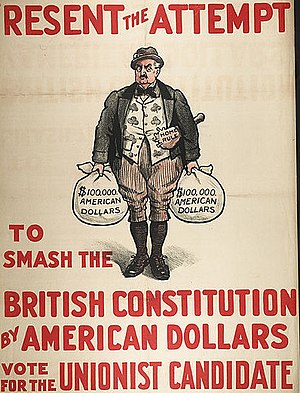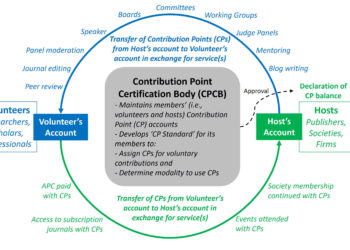
The concepts around the publication of eLife content by PubMed Central (PMC) are disturbing enough — cronyism, competition, shirking of rules, and so forth. But does it amount to actual financial help? How much money might eLife be saving because PMC is giving them a free ride? And how much value might this early move into the market create for eLife long-term?
And, let’s keep in mind — any cost savings or financial benefit would be accruing to a well-funded start-up jointly established in the US and the UK.
I began to explore this question after some emails suggested PMC’s support of eLife wasn’t a big deal because there wasn’t really that much value to what PubMed Central was doing. With that thought, I decided to work through an estimation to test the hypothesis. This is what I came up with quickly. I’ve tried to make my assumptions clear, so you can question them. But even if assumptions are debated, I think a sizable amount of value is being delivered to eLife by PMC.
I’ve tried to use actual market data for some of the assumptions, but I can’t share specifics of where these numbers came from, for obvious reasons. But, in thinking this through, there are a few factors to consider when trying to put a value on what PMC has done for eLife:
- The costs of creating a site
- The costs of publishing content
- The value of early PubMed indexing
- The value of launching earlier than planned thanks to PubMed Central assistance
Based on estimates I’ve seen for launching a commercial scientific publishing Web site, eLife is being subsidized by the US government via PubMed Central to the tune of between $40,000 and $150,000 — assuming six months of using PubMed Central as its primary publisher. Add to this the costs of posting content and maintaining all the downstream aspects (search engine, content integrations, and so forth), and you can put another $30,000 to $80,000 on top of this price tag.
My total estimate is, just from a publishing technology cost standpoint, PubMed Central is subsidizing eLife to the tune of between $70,000 and $230,000 for the six months we’ll assume PubMed Central will be acting as the primary publisher of eLife content.
[Sidebar: Because PubMed Central is also the online publisher of the Journal of the Medical Library Association and the Journal of Biomolecular Techniques, each of these entities is receiving a similar government subsidy — between $140,000 and $460,000 per year. In total, PubMed Central is taking between $280,000 and $460,000 in publishing technology contracts off the market by doing this.]
The trickier part of the estimate for eLife is placing a value on being indexed immediately in PubMed. This is a highly coveted status for new journals, one that most have to wait many months to receive when it goes through the regular process, either via MEDLINE or through normal PubMed Central processes (which eLife was allowed to skip). I think a good way to calculate its value is by attributing to it the cost of waiting for it through normal channels. That’s essentially another occurrence of the cost we had above — another benefit of not having to incur the costs of six months of online publishing. Now, of course, PubMed indexing could be much more valuable. After all, it provides many benefits:
- Discoverability
- Legitimacy, which helps with attracting future authors
- Credibility, which helps with editors, authors, and brand
Most journals have to be patient and persistent, expending resources over a fairly lengthy period of time, in order to get these elements in place. Having them granted through government intervention has a lot of value, but it’s hard to estimate. So let’s stick with our assumption that it’s worth another six months of publishing technology. Using the clock, so to speak, at least gives us an assumption that has some real-world equivalence and a common basis. Just this simple extension adds another $70,000 to $230,000 in value to the equation — another six months of benefit based on the prior estimates.
Then, there is the main reason eLife wanted by using PubMed Central as its primary publisher — early entry into the market. What’s the value of this? We need to know more about eLife’s ultimate business model, which isn’t clear. But for this exercise, let’s assume it’s drifting toward the PLoS ONE business model, which minutes from the June 2012 PubMed Central National Advisory Committee indicate might happen. The benefit of launching early on PubMed Central, then, would be that they will have a six-month head start. So, no matter when eLife imposes APCs, it will be able to do it six months earlier than it would have been able to otherwise, thanks to PubMed Central’s assistance in getting them on the market earlier with published content indexed immediately in PubMed.
How might that help eLife if it emulated PLoS ONE? In the first half of 2012, PLoS ONE published 10,484 articles. Assuming 90% of these paid the $1,350 APC for PLoS ONE, their revenues from publishing these articles was approximately $12.7 million. It’s doubtful eLife will match the volume PLoS ONE in its first couple of years, but who knows? Nevertheless, let’s cut that volume assumption in half, assuming eLife is only half as successful at attracting papers. That means that the value of getting to market early thanks to PubMed Central and having APCs at the PLoS ONE level for six months is approximately $6.35 million, whenever they activate APCs. Using the time-value of money, the value of getting this $6.35 million early — six months early — is about $250,000, based on a current 8% discount rate.
Adding the market value and financial value of the gift PubMed Central bestowed on eLife, therefore, is arguably in the range of $460,000 to $1.1 million, based on the estimated costs of the services provided, the value of PubMed indexing, and the advantages eLife could accrue by charging APCs six months earlier than it might have otherwise, thanks to PubMed Central’s acceleration of their business plans.
And that’s why this may be nothing short of a windfall for eLife.
Discussion
1 Thought on "How Valuable Is PubMed Central's Early Publication of eLife Content?"
The biggest benefit is legitimacy. Legitimacy assures authorship. Authorship assures periodicity. Periodicity assures continued and timely publication and they attract authors. All of the aforementioned are something most start up journals do not have.



